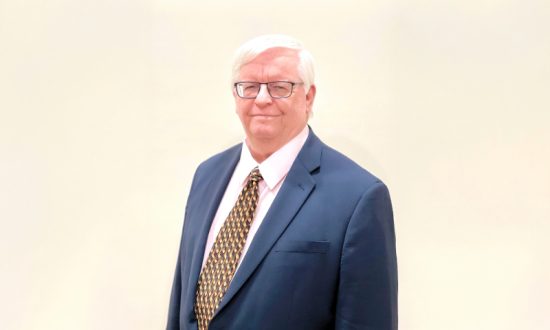Dean Hoke is the Co-Founder of Edu Alliance, a higher education consultancy, and the Producer and Co-Host of Small College America. He also serves as a Senior Fellow at the Sagamore Institute, a think tank based in Indianapolis, Indiana.
Through my ongoing work writing a blog and co-hosting the podcast Small College America, I’ve explored the identity, challenges, and the enduring impact of U.S small colleges on the higher education landscape. I have interviewed and written profiles of over 25 small colleges. These conversations with leaders, faculty, and experts have reinforced a belief I’ve held for years: that small colleges, while often underappreciated in national discourse, are absolutely essential to the health and diversity of American higher education.
Background
In the United States, according to the National Center for Education Statistics, there are 5,839 accredited higher education institutions. Of those, 1,568 are private non-profit, of which 1,179 are private 4-year colleges and universities with a student headcount population of 3,000 and under.
The Undervalued Heart of U.S. Higher Ed
Private, small colleges with 3,000 students or fewer enroll about 4.6% of students nationally, but their influence far outweighs their size. They are often incubators of civic leadership, sites of deep intellectual mentorship, and engines of social mobility, particularly for rural, first-generation, and underrepresented students. Many have been part of their communities for over a century, often serving as their region’s largest employer or cultural hub. Yet, as enrollment pressures and financial headwinds mount, small colleges face existential threats that rarely get the national attention they deserve.
The Small College America series exists to change that narrative. It is both a spotlight and a sounding board—highlighting the distinctive character of these institutions and amplifying the voices of those who lead and teach within them.
What We Learned from Writing the Profiles
The ten colleges reveal a rich tapestry of missions, values, and models—all tailored to local contexts and student needs.
Let’s start with a highly selective liberal arts small college located in North Carolina. They have invested deeply in academic rigor, faculty-student engagement, and expanding access to education. The school’s endowment allows it to meet 100% of demonstrated need, making a private college education attainable for more families. Its students regularly pursue national fellowships and high-profile graduate programs, but at its heart is still its tight-knit, academically driven campus culture.
In contrast, a College in eastern Kentucky offers a work-study model and full-tuition guarantees for students from Appalachia. Here, the mission is explicitly tied to the economic and social uplift of a distressed region. Students work at least 10 hours per week in campus jobs, contributing to their education and the college’s overall operation. The result? Low student debt, strong retention, and a powerful sense of ownership and pride among students.
A historically Black institution in Alabama, with fewer than 3,000 students, stands as a testament to the enduring legacy of mission-driven education. The university has produced generations of Black professionals, from engineers and veterinarians to military leaders and civil rights activists. Today, it combines a rich historical identity with modern programs in STEM, health sciences, and agriculture, aiming to be both culturally rooted and forward-looking.
In Arkansas, a college of 1,200 undergraduate students leans heavily into the liberal arts tradition, with an innovative program that requires every student to pursue experiential learning beyond the classroom. From internships and research to artistic creation and service learning, the College builds bridges between theory and practice. This model nurtures critical thinking and real-world readiness in equal measure.
A College in Indiana with 800 students is one of the few remaining men’s colleges in the U.S., and it continues to thrive thanks to a strong alumni network, a culture of mentorship, and a clear institutional identity. The college has embraced its single-gender mission not as a relic, but as a way to foster leadership, resilience, and accountability. Small class sizes and a rigorous academic environment create a community where faculty and students know one another deeply.
A private College in Pennsylvania with an enrollment of less than 3,000 merges tradition with strategic innovation. Its Institute offers real-world policy experience while its strong civic ethos engages students in national and global conversations. Students often cite the combination of intellectual challenge and personal attention as key to their transformation.
One small school in Ohio, with fewer than 2,000 students, emphasizes mentored undergraduate research as a core component of its identity. Every senior completes an independent study project under faculty guidance, cultivating academic rigor and self-confidence. It’s a model that has earned national recognition for preparing students for graduate study and leadership roles.
In Washington State, a private four-year college prioritizes environmental stewardship and global awareness. With its strong academic programs and commitment to access, it attracts students who seek a high-quality liberal arts education in a supportive and progressive campus community.
A University in Virginia blends a deep historical legacy with modern leadership development. The college remains focused on student success, with strong pre-professional advising and engaged alumni. Its speaking tradition and honor code continue to shape a unique campus culture of accountability and respect.
In Indiana, a college draws strength from its Quaker roots, emphasizing peace, integrity, and global citizenship. They blend classroom learning with hands-on experiences in business, policy, the arts, and more. The college’s commitment to ethical leadership sets it apart.
Voices from the Inside: What the Interviews Reveal
The podcast interviews have added another layer—an insider’s perspective on both the promise and precarity of small colleges. In speaking with a variety of small college leaders, including trustees, current and retired presidents, academic leaders, faculty, and athletic directors, a few themes have consistently emerged:
Mission Matters: Institutions that know who they are—and who they serve—are more resilient in the face of demographic and financial pressure. When schools stay true to their core mission, whether that’s serving rural students, promoting equity, or preserving the liberal arts, they’re more likely to make strategic decisions aligned with their strengths.
Leadership and Governance: Shared governance and faculty engagement aren’t just ideals—they’re strategic advantages. At a time when trust in higher education is fragile, transparent leadership and collaboration between administration and faculty are a difference-maker.
Adaptation, Not Abandonment: Many small colleges are embracing innovation, but not by discarding their identity. Instead, they are expanding their mission through new formats, including online programs, international recruitment, and interdisciplinary majors. It’s not about becoming something else—it’s about evolving while holding onto what makes them distinct.
A compelling example comes from a Director of International Enrollment at a small private undergraduate college. She has helped bring global diversity to a campus rooted in the Midwest, with international students now making up nearly 20% of the student body. Through alumni networks abroad and mission-aligned messaging, the college has reimagined its reach without compromising its core.
In another episode, we spoke with a reporter who highlighted how small colleges can reframe their stories around community engagement, student transformation, and distinctive programming. The reporter noted that while the national media often overlooks these institutions, they are frequently the most agile and mission-centered.
Two Provosts offered insight into a new Coalition between their small colleges. They emphasized that collaboration, not merger, can be a lifeline, allowing institutions to share services and expand offerings while retaining identity. Their approach is being watched closely as a potential model for other mission-aligned partnerships.
From athletics to academics, from enrollment to endowment, these conversations underscore a simple truth: small colleges succeed not because they are alike, but because they are distinct.
Recent conversations add even more dimension to this understanding:
- A small religious-affiliated private University in California described how they are tackling price sensitivity with their Public Price Match Initiative, competing directly with public institutions while preserving the personal attention and mission-centric culture of a private college. As a designated Hispanic-Serving Institution, the college has embraced equity and inclusion not just as labels but as lived practices.
- A college in Kentucky reaffirmed the power of a no-tuition model combined with a required student labor program. They’re holistic approach creates pathways for students from Appalachia and other underserved regions, proving that access and rigor can coexist without student debt.
- An Official of a state Association of Independent Colleges and Universities provided a valuable policy perspective. He highlighted demographic shifts, economic constraints, and the urgent need for institutional collaboration and state-level advocacy to preserve the role of small private colleges.
These interviews expand the view beyond campus walls, pointing to how small colleges not only adapt to changing conditions but are actively shaping new, sustainable models for higher education.
More Than Just Education
What’s striking in both the profiles and interviews is that small colleges do far more than educate—they anchor communities. In many towns, the local college is the largest employer, the primary venue for arts and culture, and a source of medical clinics, tutoring programs, and civic leadership. When a college closes, the ripple effect can be devastating: lost jobs, declining property values, and reduced community services.
These colleges and universities don’t just provide education—they offer hope. Small private institutions play a crucial role in powering regional innovation and civic engagement, elevating every student who walks through their doors. Their deep academic experiences are deeply rooted in a sense of place and purpose. These are not incidental contributions—they are central to regional vitality.
The Real Risk: A Shrinking Sector
Despite their strengths, small colleges are at risk. Since 2004, over 170 private nonprofit colleges closed or merged, many of them small. Declining birth rates, rising discount rates, and increasing skepticism about the value of higher education have taken a toll.
As I’ve spoken with leaders across the country, there is a growing concern that policy conversations in higher education are too often dominated by the largest research institutions and state systems. That’s understandable—but short-sighted. If we lose small colleges, we lose pathways for nontraditional students, we lose regional resilience, and we lose models of deeply human education that can’t be replicated at scale.
Conclusion: Why Small Colleges Matter Now More Than Ever
In the landscape of American higher education, small colleges are not outliers—they are vital pillars. They reach students that other institutions often overlook. They teach not just with content, but with care. They build communities, elevate regions, and preserve a deeply human approach to learning that is increasingly rare in a world of mass systems and digital distance.
These colleges are often first in line to take a chance on a student with potential rather than polish. They are nimble enough to innovate but rooted enough to stand firm on values. They do more with less, not because they want to, but because they must—and still, they produce graduates who lead, serve, and enrich every sector of our society.
To lose them is not just to lose options. It is to lose opportunity, equity, identity, and history. It is to allow higher education to drift toward a monoculture, where scale replaces substance and access becomes stratified.
If we care about a diverse, inclusive, and resilient future for American education, we must care about small colleges, not sentimentally, but strategically. They are not relics of a bygone era. They are laboratories for what education can and should be.
They remain one of the most effective engines of equity, character, and community, and their size is not their weakness, but the source of their greatest strength.




